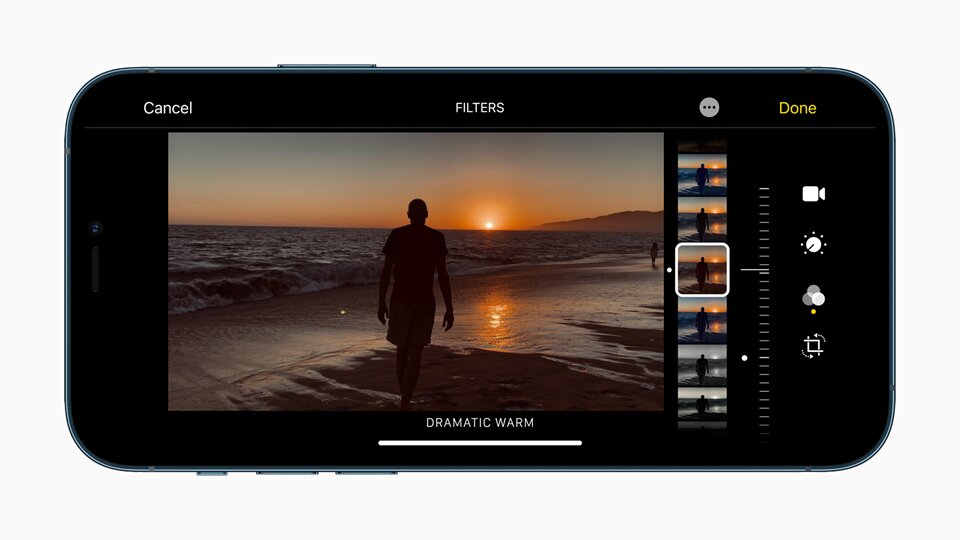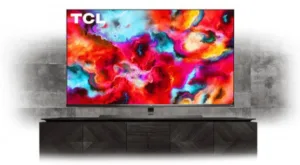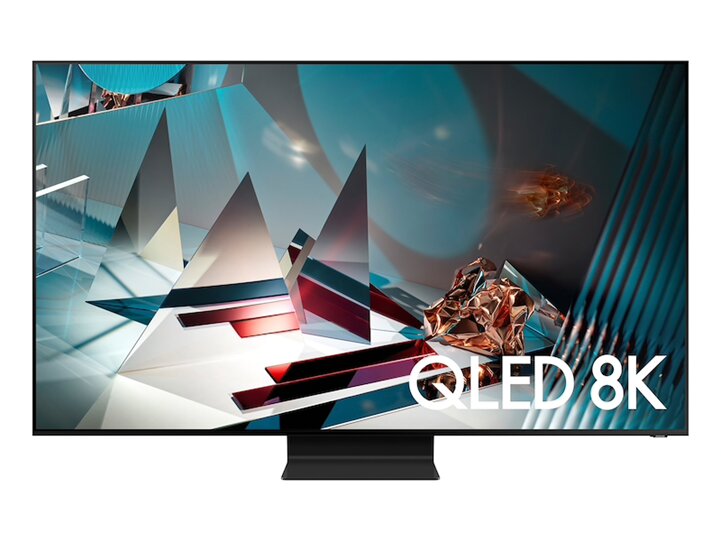It is the time of the year to look forward to industry trends in 2021. This time last year it was not known that global markets would be hit by COVID pandemic. It came when the display market had been already impacted by over-supply for many quarters, panel prices were at record low level and Korean suppliers were transitioning from LCD to OLED due to low profitability.
The first quarter of 2020 was impacted by supply constraints due to China impact. In the second quarter demand had a negative impact due to global lockdowns. In the third quarter, demand experienced strong growth both in IT as well as TV, resulting in tight supply and panel price increases. Display panel demand is still strong in Q4 and is expected to continue in 2021. For 2020, display technology trends continued as expected with some delays in new product introductions (Display Technology – Top Trends for 2020).
MiniLED Display: Poised for growth
Top consumer brands such as Apple, Samsung and others are expected to introduce miniLED-based products in 2021 for multiple applications. MiniLED-based displays were first introduced in 2018, but trade issues in 2019, and global pandemic in 2020 have delayed suppliers’ expansion plans and product introductions. MiniLED-based LCD products are already being shipped for use in high-end monitors and TVs.
- By the use of multi zone blinking backlights (>10,000 zones), miniLED can enable LCD to have higher brightness (>1000nits), very high contrast (>10,000:1), excellent HDR, better color rendering, ultra thin form factor, superior power efficiency and display performance close to OLED.
- MiniLED with the combination of quantum dot display technology can deliver >90% of DCI-P3 color gamut.
- Suppliers are now starting to increase capacities and investments. They are installing equipment for high-speed transfer, die testing and sorting to improve manufacturing yield.
- The supply chain is evolving. There is more collaboration among suppliers within the miniLED supply chain: substrate, LED epitaxial wafer, packaging, driver ICs, display suppliers and even consumer electronic companies.
Apple is expected to introduce 12.9” miniLED-based iPad Pro product in 2021. The company is reportedly planning to release six miniLED products by the end of 2021. Samsung is planning to introduce miniLED backlight technology for its quantum dot QLED TVs in 2021. Apple’s and Samsung’s adoption of miniLED technology will have a very positive impact on the supply chain and growth potential. Success will depend on suppliers’ ability to reduce costs to drive demand.
 TCL 75-inch 8 series Quantum Contrast MiniLED backlight TV
TCL 75-inch 8 series Quantum Contrast MiniLED backlight TV
MicroLED Display: Progressing towards commercialization
MicroLED display technology is making steady progress towards commercialization. However the technology faces several challenges, which will take more time to resolve. In the meantime, suppliers will test the market with higher priced, lower volume, value-based products.
Samsung announced a 110″ 4K prefabricated microLED TV in December 2020. It is expected to ship in Q1 2021. At CES 2020 Samsung showed “The Wall” large format TV products in 292″, 150″, 110″, 93″, and 88″ using larger size chips. It also showed a 75″ (4K) microLED TV based on smaller size chips from PlayNitride.
Samsung also planned to commercialize a 75″ microLED TV based on PlayNitride chips in 2021. Display panel suppliers, many start-up companies and component suppliers as well as top brand manufacturers are exploring solutions for microLED products including Apple. The technology is still not in volume production due to manufacturing, production, scaling and yield issues. Next generation microLED display technology is still evolving.
- MicroLED displays have a strong potential to outperform TFTLCD and OLED as they offer high contrast, fast response time, wide viewing angles, wider color gamut, very high brightness, higher readability, long lifetime, environment stability, high resolution, ultra low power consumption and options of using a flexible backplane.
- They also allow the integration of sensors and circuits, enabling thin displays with embedded sensing capabilities such as fingerprint identification and gesture control.
- More partnerships and collaborations among panel makers, set makers and microLED chip makers are required for success.
Companies are initially targeting wearables, AR/VR headsets, digital signage, public display, and automotive (HUD) applications using microLED. High-speed transfer, assembly technologies, yields and defect management all need to improve before large volume commercialization in consumer products such as smartphones or TV.
Quantum Dot Display: Entering Expansion Phase
Quantum Dot (QD) has become a true enabler of display technologies by empowering LCD, OLED and MicroLED. It has increased its market share in 2020 with lower prices, higher product availability and improved performance enabling strong growth in shipments. This technology is expected to enter an expansion phase in 2021 through high capital investments (from Samsung) and technology developments that will enhance other technologies such as LCD, OLED and MicroLED especially through QD color conversion (QDCC).
Samsung, Vizio, TCL, Hisense, Konka and Xiaomi are already offering QDEF-based LCD TVs. Samsung is the dominant supplier of QDLED TVs. The company is now offering products ranging from 43-inch to 98-inch with resolutions up to 8K at various price points. QD TV set prices has reached below $1K enabling higher adoption, larger market shares and stronger growth rates in 2020 in spite of market slow down.
QDOLED: Samsung Display plans to invest close to $11 billion in next generation displays, which will include QDOLED and QNED. QDOLED-based products are expected in 2021. However there are still many challenges. Blue emitting materials still have efficiency and lifetime issues although multiple layers of blue OLED can be used to reduce the problem. (although as we have reported, Samsung’s TV division is not believed to be committed to the technology – Editor)
QNED: Recent industry information is showing Samsung to be working on QNED technology, a QD nanorod based on GaN technology. It is expected to follow QDOLED development. (Are Quantum Nano Emitting Diodes (QNEDs) the Next Big Thing?)
QD MicroLED: With QDCC, display makers can start with a blue MicroLED array and then patterned quantum dots can convert blue light into both red and green at the sub-pixel level. It can be made compatible with the MicroLED manufacturing process and can reduce defect rates (from the pick and place process). This type of MicroLED display is expected to come in two or three years. It may still have challenges with full color conversion.
QD-Emissive Display: Electro-emissive QD display will have similar properties to OLED (perfect black and viewing angle), but with higher color gamut and higher brightness. BOE showed a 55-inch 4K active matrix QD LED (AMQLED) based on electroluminescent quantum dot technology in November. According to the company, AMQLED displays present a variety of advantages such as self-emitting, a wide color gamut, and a long lifetime. The display feature 3840x 2160 resolution, 119% of the NTSC color gamut and 1,000,000:1 contrast ratio.
QD technology will enter another expansion phase in 2021 with strong demand growth even though it faces many challenges and competition from other display technologies.
 Apple iPhone 12 with a flexible OLED Display
Apple iPhone 12 with a flexible OLED Display
OLED: Evolving for next generation products
OLED display technology is continuing to advance and evolve for next generation products. Technology development, improvements in materials and advancements in inkjet printing combined with capacity expansion and higher competition will help OLED display to gain higher market share in 2021. OLED display with its superior performance and increasing share is still facing many challenges. Companies are developing technologies to resolve these issues.
Flexible OLED: The technology will continue to gain share in 2021. It has been most successful in the smartphone market, which did slow down substantially in 2020. However the market is expected to recover with positive growth in 2021. The introduction of 5G-based products needing slimmer displays to accommodate 5G enabling components will increase flexible OLED demand. Apple has shifted completely to flexible OLED for iPhone 12 products. Integration of new technology such as fingerprint under display, touch display, and other features to reduce border & increased screen to body ratio can open up new opportunities.
Samsung Display dominates the flexible OLED market but LGD and BOE are increasing production. More capacity came from companies such as Tianma, Visionox, China Star (CSOT) and others in 2020. Samsung Galaxy and Apple iPhone products are the leading users of flexible OLED displays. Both Samsung and Apple are focusing on LTPO technology (combination of LTPS + Oxide TFT) that enables variable refresh rates and lower power consumptions.
Foldable OLED: Foldable OLED received a boost in 2020 with the Samsung Z-flip, a clamshell design with ultra-thin glass (higher hardness, better scratch resistance) and a more aggressive price <$1200. The success of Samsung Z-flip and Z-fold2 has increased the growth outlook in 2021 and reduced reliability concerns. Development of colorless polyimide and ultrathin glass cover lenses, touch sensors on thin film encapsulation, LTPO and other technology will enable further success.
White OLED TV: Products increased market share with strong growth and introduction of a 48-inch size display. OLED TV has secured a strong presence in the premium TV market and will increase share in 2021. LG Electronics, Sony, Panasonic, Skyworth, TPV, Hisense, Konka and others have all joined in, using LG Display’s panels. LGD is converting LCD TV capacity to OLED and is also making additional investment in production. It has faced strong competition from Samsung QLED (QDEF-based LCD) TV with aggressive price reductions.
QD-OLED: Samsung is planning to convert its 8.5 gen a-Si LCD capacity to 100K/m QDOLED capacity. According to industry news Samsung Display is starting to ship QD-OLED TV prototypes to potential customers and expected to mass produce in Q3 2021. QDOLED could combine the best of OLED and quantum dot technology.
LCD: Reinventing itself for survival and growth
The covid pandemic in 2020 had the most impact on the LCD market. Covid started when LCD was already in extreme over-supply with slow demand and high capacity expansion. Prices were at record low levels, panel suppliers had been unprofitable for many quarters and Samsung and LG Display were transitioning form LCD to OLED due to low profitability.
The impact of Covid on Chinese fabs delayed expansion plans and reduced production. Work-from-home and education-from-home increased tablet, notebook and monitor demand to an unexpected new level helping supply/demand balance. TV demand recovered in the 2H of 2020. Positive growth in LCD demand in 2021 combined with a tighter supply side will lead to brighter outlook. History has shown that when “panel price increases lead to set price increases”, it impacts demand negatively.
Quantum dot and MiniLED technology are helping LCD to reinvent itself by improving performance and bringing it closer to OLED display. This will help LCD to survive longer and enable its continued domination in large size display for many more years. For smaller size display a-Si and LTPS are continuing to lose shares to OLED especially in smartphone market. LTPS suppliers are continuing to innovate and improve performance and starting to increase shares in the notebook and tablet market. MiniLED will empower LTPS further.
The display market outlook is expected to be brighter in 2021. (SD)
Sweta Dash is the founding president of Dash-Insights, a market research and consulting company specializing in the display industry. For more information, contact [email protected] or visit www.dash-insights.com


